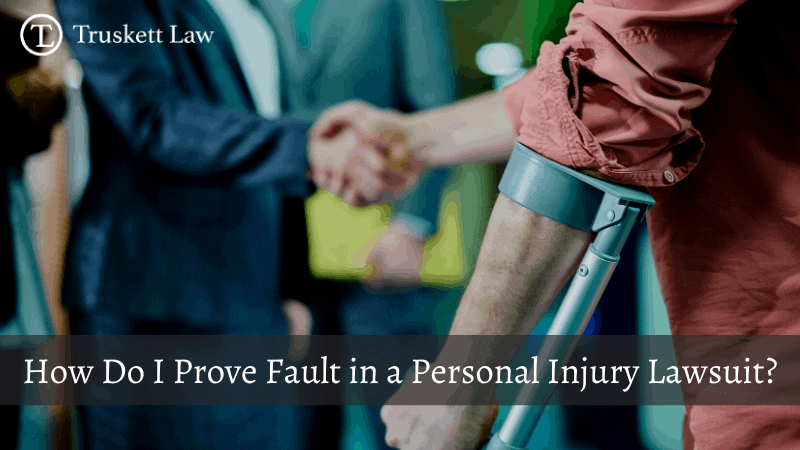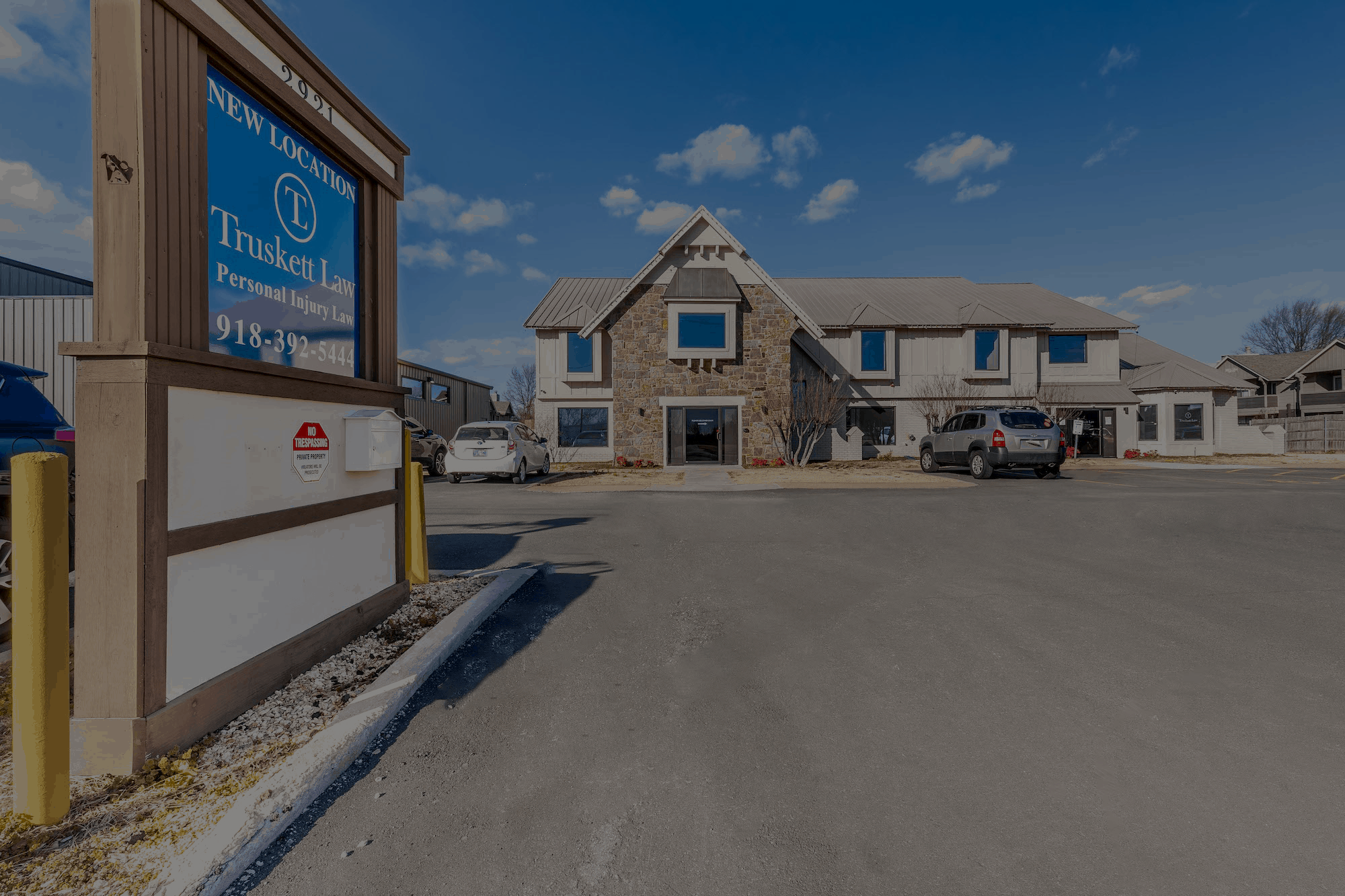
02 Feb How Do I Prove Fault in a Personal Injury Lawsuit?
How to Prove Fault in a Personal Injury Lawsuit
No matter the circumstances, dealing with the aftermath of an accident, is never a fun process. Accidents and injuries can be overwhelming and life-altering. So, how do you prove whose fault it is in a personal injury lawsuit? When you choose to pursue legal compensation or file a claim, you often need to determine the legal responsibility for an accident or injury. This hinges on whether someone was careless or negligent. But before you can decide if someone was negligent, you must first determine who is legally at fault. We’re here to guide you on how to prove fault in a personal injury case.
So, how do you prove fault in a personal injury lawsuit? Typically, injury cases arise due to one or more parties acting negligently. Negligence is when conduct falls below the standard of care expected of a reasonable person and causes harm to another party. To prove that the other party is liable for your loss or damages, you must first prove four elements of negligence were present during the accident:
- Duty: The at-fault party had a responsibility to avoid or prevent causing you harm.
- Breach: They breached their duty.
- Causation: Their breach of duty caused you harm or injury.
- Damages: You’ve suffered loss or injuries, usually monetary.
By proving your injury is the result of negligence, you establish that the other party’s action differed from those of a reasonable person would make. A competent person with sound judgment would behave differently than the other party, which would not have resulted in an accident or injury.
Fault Defined
 Fault is legally defined as “neglect of care; an act to which blame or censure is attached. Fault implies any negligence, error, or defect of judgment.” Fault can be further described to “embrace a refusal to perform an action that one is legally obligated to do, such as failure to make a payment when due.” You must understand that the court can rule that you can be just as responsible as the opposing party. When considered in the comparative fault rule, fault can be shared and is often measured as a percentage.
Fault is legally defined as “neglect of care; an act to which blame or censure is attached. Fault implies any negligence, error, or defect of judgment.” Fault can be further described to “embrace a refusal to perform an action that one is legally obligated to do, such as failure to make a payment when due.” You must understand that the court can rule that you can be just as responsible as the opposing party. When considered in the comparative fault rule, fault can be shared and is often measured as a percentage.
In some states, the damaged party can’t recover compensation if the fault is more than 50% or more, but if it’s 49% or less fault, they can recover, although it’s reduced by the degree of fault. For Oklahoma, the 51% Bar Rule is followed meaning the damaged party cannot recover if it is more than 51% or more at fault. If the damaged party can recover if it’s 50% or less at fault, the recovery is reduced by the degree of responsibility.
Duty
When a negligence claim is being assessed, the first thing that is looked at is whether or not the defendant owed the plaintiff a legal duty of care. Sometimes this can be determined by the plaintiff and defendant’s relationship. For example, a doctor has a legal duty of care for their patient. On the other hand, the defendant may owe the plaintiff a legal obligation to act with reasonable care within a particular situation.
Breach of Duty
The court then looks at whether the defendant breached their duty by doing, or not doing, something that a reasonably prudent person would do under similar circumstances. This is the legal standard that represents how an average person would responsibly act in a particular situation. The defendant could be found negligent if the average person, knowing what the defendant knew at the time, would have known that someone may become injured as a result of their actions and would have acted differently than the defendant did.
Causation
The plaintiff needs to show that the defendant’s negligence caused their injury. This is usually proven with substantial evidence. You must collect as much evidence as possible throughout the entire process. As soon as an accident occurs, you should document it to the best of your abilities.
Take pictures of your injuries and damages, collect incident and police reports, keep a daily journal of the daily impact your injuries had, record all medical bills and expenses, employment records, and your personal injury insurance information. All of these should be acceptable forms of evidence in showing causation and damages.
Another aspect of causation includes determining if the potential to cause an injury was foreseeable. If it’s determined that it was unforeseeable, the defendant won’t be held liable.
Damages
The court then compensates the plaintiff for their injuries. This is usually monetary compensation for expenses like medical care or property damages.
Who Determines Liability
The person who determines liability in a personal injury claim can depend on the circumstances. But usually, if you are consulting with a personal injury attorney, they’ll investigate your case. When they investigate, they’ll discover all the potential at-fault parties, decide, and then present your case to the other side of the court.
Often, liability can be covered by liability insurance. This leaves it up to insurance companies to pay damages or compensation. Insurance companies will usually conduct their own investigation and make a liability determination. If the parties are unable to agree on who is at fault, you may decide to file a personal injury lawsuit. This will give a civil court jury the final say as to who is at fault.
Any investigation will involve collecting evidence, interviewing witnesses and all involved parties, and consulting with and hiring experts. Typical evidence includes police reports, documents, and records kept by all parties, and witnesses and parties’ statements.
Legal Liability
For almost all accidents, legal liability is determined by negligence. If the injured person was where they weren’t supposed to be, or in a place where they should have expected the kind of activity that caused the accident, the person who caused it may not be held liable. This is due to this person not having a “duty” to be careful or cautious toward the injured person. If the injured person was also careless, their compensation might be reduced depending on the extent of their carelessness. This is called comparative negligence.
If the negligent person caused the accident while working, the employer might also be legally held responsible. If an accident occurs on property that is dangerous, either due to being poorly built or maintained, the property owner is liable for being careless with maintaining the property. This applies regardless of whether they caused the dangerous condition. If an accident is caused by a defective product, the seller and manufacturer of the product are liable. Even if the injured party doesn’t know which was careless, this still applies to both.
Other Ways to Prove Fault
Not all personal injury cases are caused by negligence. Someone can prove fault by establishing intentional conduct, proving “negligence per se,” or showing the case should be governed by the “strict liability” standard of proof.
Intentional conduct is done with the desired purpose or substantial certainty of the consequences. This can include personal injury cases that result from assault, battery, and similar behavior, which can lead to an intentional tort case.
Negligence per se can be applied when there is an unexcused violation of a statute. The defendant would be automatically liable for damages if the plaintiff’s injury is of the type the statute was intended to protect. An example would be if someone were injured due to reckless driving. Liability would likely be established using negligence per se.
Strict liability means the injured person doesn’t need to establish the defendant’s negligence. This is most often applied to product liability cases, but this can also apply to cases involving abnormally dangerous activities or the possession of wild animals. In a strict liability case, the defendant wouldn’t have to prove negligence to recover damages.
Choose Truskett Law
Suppose you’ve had the unfortunate luck of being involved in an accident that has resulted in an injury. In that case, Truskett can help walk you through the legal process of filing a personal injury case and seek legal compensation. We understand how overwhelming an accident can be, and we want to be there for you. We’re ranked as Tulsa’s #1 Personal Injury Lawyers on Google Reviews.
So, why choose Truskett? Truskett Law is comprised of lawyers who serve the Tulsa community and have over a decade of experience practicing law. Truskett practices personal injury law exclusively. We’re dedicated to our clients and are passionate about legally advocating for you. We were founded on core values like community, safety, advocacy, and educating clients. Contact us for a free personal injury claim consultation.
Don’t risk it. Call Truskett.


Sorry, the comment form is closed at this time.